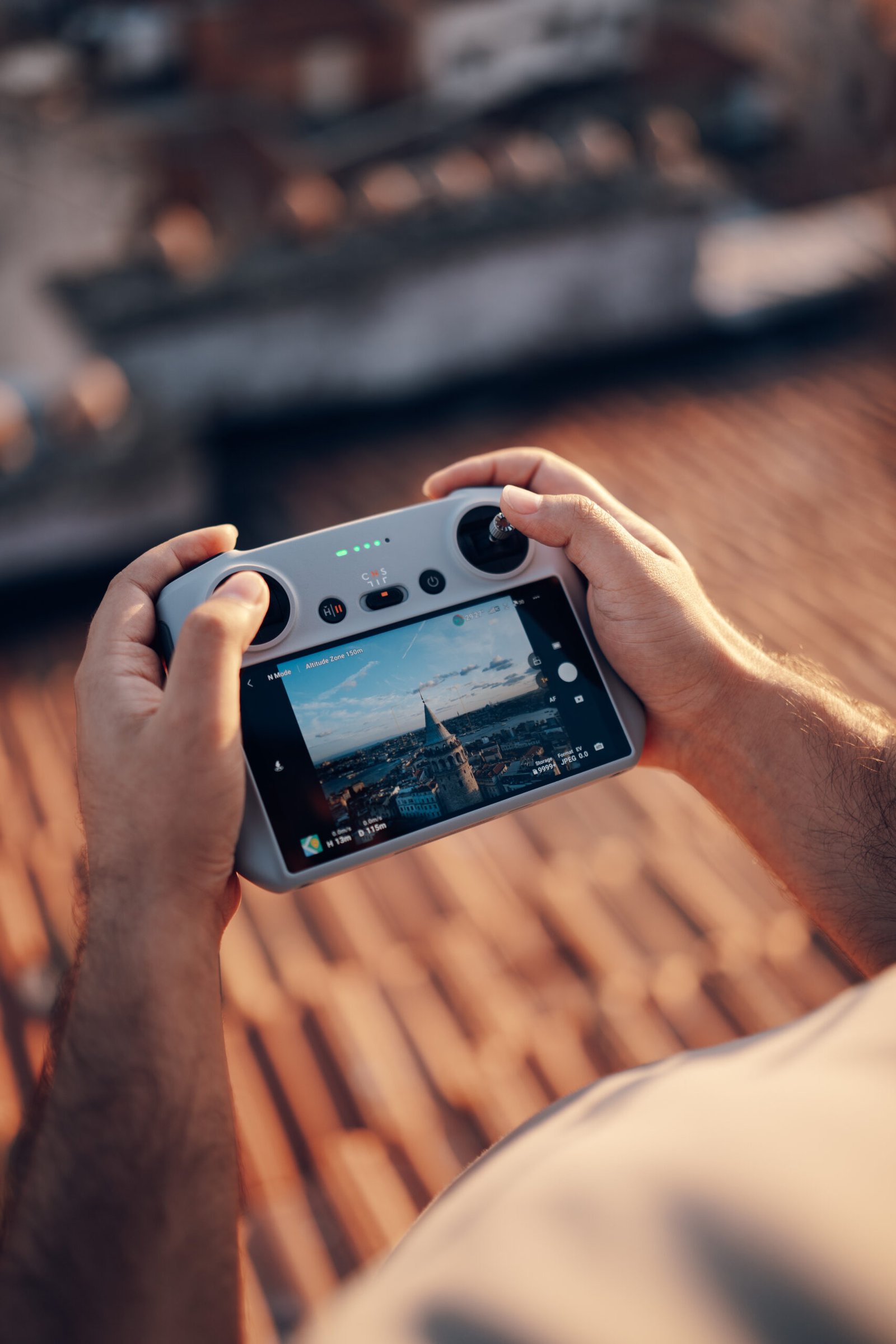Have you ever wondered how much energy wireless video monitors consume? In today’s digital age, where we rely heavily on technology for communication and entertainment, it’s essential to understand the environmental impact of our devices. Wireless video monitors have become increasingly popular for surveillance, baby monitoring, and home security purposes. But how much energy do they actually consume? This article aims to shed some light on the energy consumption levels of wireless video monitors, providing you with valuable insights into the sustainability of these devices.

This image is property of images.pexels.com.
Introduction
Wireless video monitors have become increasingly popular in recent years, offering convenience and flexibility for monitoring activities in various settings. However, it is important to consider the energy consumption levels of these devices to ensure efficiency and sustainability. This article aims to explore the factors that affect energy consumption in wireless video monitors and provide a comprehensive analysis of the impact of each factor.
Factors Affecting Energy Consumption
Several factors contribute to the energy consumption levels of wireless video monitors. It is essential to understand these factors in order to make informed decisions regarding energy efficiency. The key factors affecting energy consumption in wireless video monitors are:
Screen Size
The screen size of a wireless video monitor plays a significant role in its energy consumption. Generally, larger screens require more power to operate compared to smaller ones. This is due to the increased number of pixels and backlighting required to display the content. Therefore, if energy efficiency is a priority, opting for a wireless video monitor with a smaller screen size can help reduce energy consumption.
Resolution
The resolution of a wireless video monitor refers to the number of pixels it can display. High-resolution monitors generally require more energy to operate as they have a higher number of pixels to illuminate. Lower-resolution monitors, on the other hand, consume less energy as fewer pixels need to be powered. It is important to find a balance between resolution and energy consumption when choosing a wireless video monitor.
Brightness
The brightness level of a wireless video monitor directly impacts its energy consumption. Higher brightness settings require more power to illuminate the display, resulting in increased energy usage. On the other hand, lower brightness levels reduce energy consumption. It is advisable to adjust the brightness according to the lighting conditions in the monitoring environment to optimize energy efficiency.
Refresh Rate
The refresh rate of a wireless video monitor refers to how frequently it updates the displayed image. Higher refresh rates, such as 120Hz or 240Hz, require more power to maintain smooth and fluid motion on the screen. Lower refresh rates, such as 60Hz, consume less energy but may result in slightly less smooth visuals. Understanding the impact of refresh rate on energy consumption can help individuals choose the most appropriate option for their needs.
Wireless Connectivity
Wireless video monitors rely on wireless connectivity to transmit video and audio signals. The type of wireless connection used can significantly impact energy consumption. Some wireless video monitors utilize Wi-Fi, while others use Bluetooth or other proprietary wireless technologies. Wi-Fi connections generally consume more energy compared to Bluetooth or other wireless options. Considering the energy efficiency of the wireless connection is important when selecting a wireless video monitor.
Battery Capacity
Wireless video monitors often come with built-in rechargeable batteries, enabling them to be used without direct power sources. The battery capacity of these devices influences their energy consumption. Larger battery capacities generally provide a longer usage time but can lead to increased energy consumption when charging. It is important to strike a balance between battery capacity and energy conservation to ensure optimal performance and efficiency.
Usage Patterns
How a wireless video monitor is utilized also affects its energy consumption. Factors such as the duration of usage, frequency of use, and intensity of usage impact overall energy consumption. For example, regularly using a wireless video monitor for extended periods without proper power management can result in increased energy consumption. Understanding usage patterns is crucial in maximizing energy efficiency.
Screen Size
Screen size is a crucial factor that directly influences the energy consumption of wireless video monitors. Larger screens require more power to illuminate a greater number of pixels, resulting in increased energy usage. However, it is important to consider individual requirements and the intended use of the monitor when deciding on the screen size. While larger screens may consume more energy, they offer enhanced viewing experiences and better visibility in certain situations.
Resolution
The resolution of a wireless video monitor has a significant impact on its energy consumption levels. High-resolution monitors with a larger number of pixels require more power to operate compared to lower-resolution monitors. The additional power required to illuminate each pixel contributes to increased energy consumption. However, high-resolution displays offer sharper and more detailed images, appealing to individuals who prioritize visual quality.

This image is property of images.pexels.com.
Brightness
The brightness level of a wireless video monitor plays a vital role in energy consumption. Higher brightness settings require more power to illuminate the display, resulting in increased energy usage. Conversely, lowering the brightness level can significantly reduce energy consumption. Adjusting the brightness according to the lighting conditions in the monitoring environment not only conserves energy but also extends the battery life for wireless video monitors powered by rechargeable batteries.
Refresh Rate
The refresh rate of a wireless video monitor determines how frequently the displayed image is updated. Higher refresh rates, such as 120Hz or 240Hz, require more power to maintain smooth and fluid motion. Consequently, these higher refresh rates result in increased energy consumption. However, it is worth noting that lower refresh rates, such as 60Hz, are typically sufficient for most applications and consume less energy. Understanding the tradeoff between refresh rate and energy consumption is essential when selecting a wireless video monitor.

This image is property of images.pexels.com.
Wireless Connectivity
Wireless video monitors rely on wireless connectivity to transmit video and audio signals. The type of wireless connection used significantly impacts energy consumption. Wi-Fi connections, commonly found in wireless video monitors, tend to consume more energy compared to Bluetooth or other wireless options. It is crucial to consider the energy efficiency of the wireless connection when investing in a wireless video monitor to optimize energy consumption.
Moreover, different brands may utilize different wireless technologies, further affecting energy consumption levels. Conducting a comparative analysis of various wireless video monitor brands can help identify energy-efficient options. Some brands may prioritize energy conservation by implementing power-saving features or utilizing more efficient wireless technologies. Taking these factors into account can assist in selecting a wireless video monitor that aligns with energy efficiency goals.
Battery Capacity
Wireless video monitors often come with built-in rechargeable batteries, providing mobility and flexibility in their usage. The battery capacity directly impacts energy consumption. Larger battery capacities generally offer longer usage times but require more energy to charge fully. Balancing battery capacity with energy conservation is crucial for optimal performance and efficiency.
It is important to note that wireless video monitors may include power management features to optimize energy consumption when operating on battery power. These features can include automated display dimming or sleep modes that reduce energy usage during periods of inactivity. Taking advantage of these power-saving functionalities can further enhance energy efficiency.
Usage Patterns
Understanding usage patterns is essential in assessing the energy consumption levels of wireless video monitors. Factors such as the duration of usage, frequency of use, and intensity of usage can significantly impact energy consumption. Regularly using a wireless video monitor for extended periods without proper power management practices can result in increased energy usage.
Factors affecting usage patterns include the purpose of monitoring, the context of deployment, and individual preferences. For example, in scenarios where constant monitoring is required, energy-efficient practices such as optimizing display brightness and utilizing power-saving features become even more crucial. Adjusting usage patterns to balance energy conservation with monitoring requirements can result in significant energy savings over time.
To further optimize energy consumption, it is advisable to power off or put the wireless video monitor into a low-power mode when not in use. Additionally, scheduling regular breaks during monitoring sessions can help reduce overall energy consumption. Being mindful of usage patterns can maximize energy efficiency and minimize unnecessary energy wastage.
Comparative Analysis
Conducting a comparative analysis is a valuable approach to determine the energy consumption levels of wireless video monitors. Comparisons can be made with wired video monitors as well as among different wireless video monitor brands.
Comparison with Wired Video Monitors
Wired video monitors typically require a constant power supply through cables, contrasting the wireless functionality of their counterparts. In terms of energy consumption, wireless video monitors generally have the advantage of greater portability but may consume more energy due to the utilization of wireless connectivity and built-in batteries.
However, it is worth noting that wired video monitors may also consume significant amounts of energy depending on their screen size, resolution, and other features. Energy-efficient wired video monitors may exist, offering an alternative to wireless options. Comparing the energy consumption levels of wired and wireless video monitors can help determine the most suitable option based on individual needs and priorities.
Comparison among Wireless Video Monitor Brands
Different brands of wireless video monitors may utilize various technologies and employ different energy-saving features. Conducting a comparative analysis among wireless video monitor brands can assist in identifying energy-efficient options. Energy-saving features may include automated power management functionalities, efficient wireless connectivity, and low-power display settings.
To conduct a comprehensive comparison, it is advisable to evaluate specifications, customer reviews, and energy efficiency labels, if available. Considering factors such as screen size, resolution, brightness, refresh rate, wireless connectivity options, battery capacity, and usage patterns can help make an informed decision when selecting a wireless video monitor that aligns with specific energy consumption goals.
In conclusion, understanding the factors that affect energy consumption in wireless video monitors is crucial for promoting energy efficiency and sustainability. Screen size, resolution, brightness, refresh rate, wireless connectivity, battery capacity, and usage patterns all play a significant role in determining energy consumption levels.
By considering these factors and making informed decisions, individuals can minimize unnecessary energy usage while still enjoying the convenience and flexibility offered by wireless video monitors. Conducting comparative analyses with wired video monitors and among different wireless video monitor brands further helps identify energy-efficient options. Overall, being conscious of energy consumption contributes to a more sustainable and environmentally friendly use of wireless video monitors.

Meet Penny Sterling, the editor behind the captivating content of our blog, “Wireless Video Monitor.” With a background in electrical engineering and a deep passion for technology, Penny has become a leading authority in the world of wireless video monitors. Her ability to distill complex concepts into accessible articles has made her a trusted guide for both tech enthusiasts and newcomers to the field. Penny’s unwavering commitment to research and staying up-to-date ensures that “Wireless Video Monitor” remains an authoritative source for reliable information. Get ready to embark on a journey of wireless video monitor exploration with Penny Sterling as your knowledgeable and dedicated mentor.


